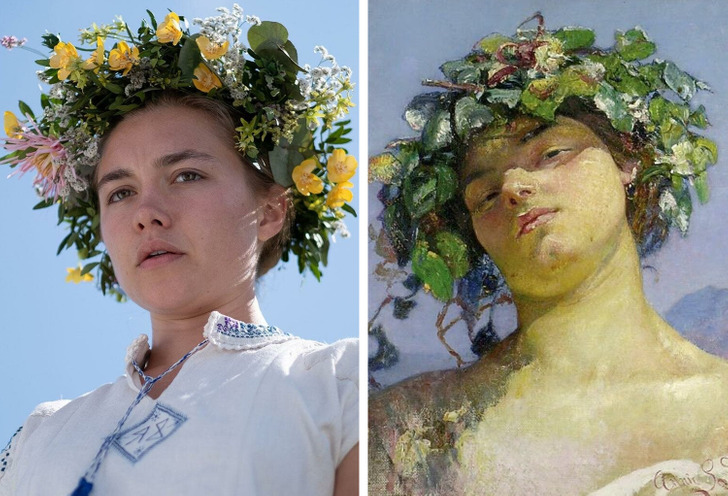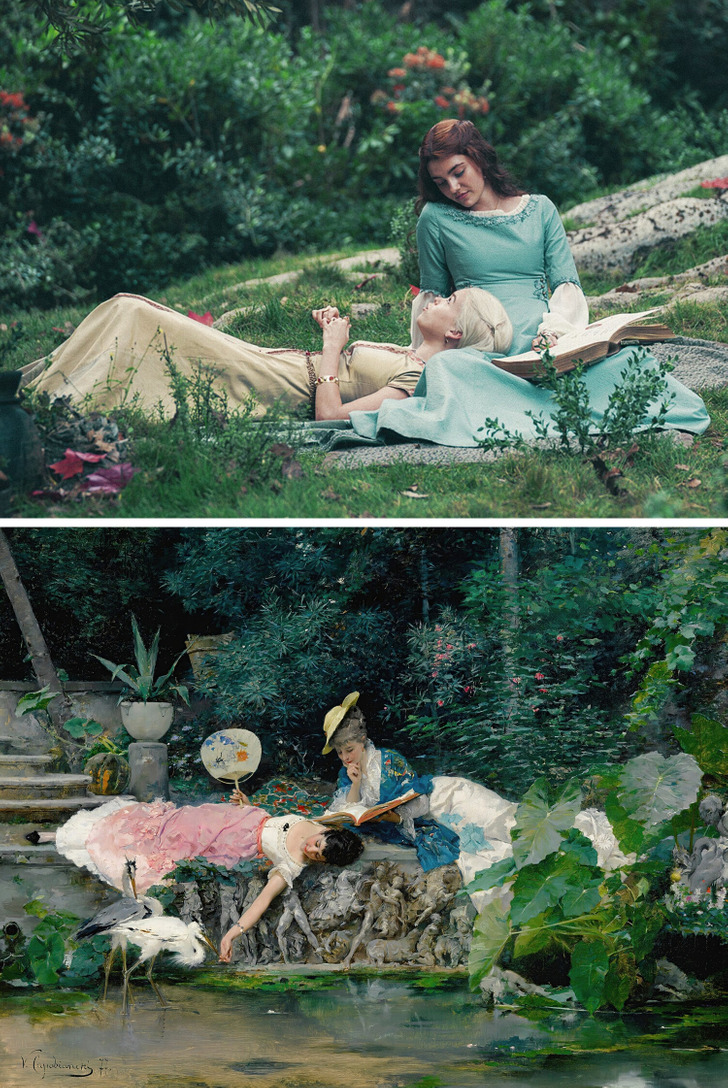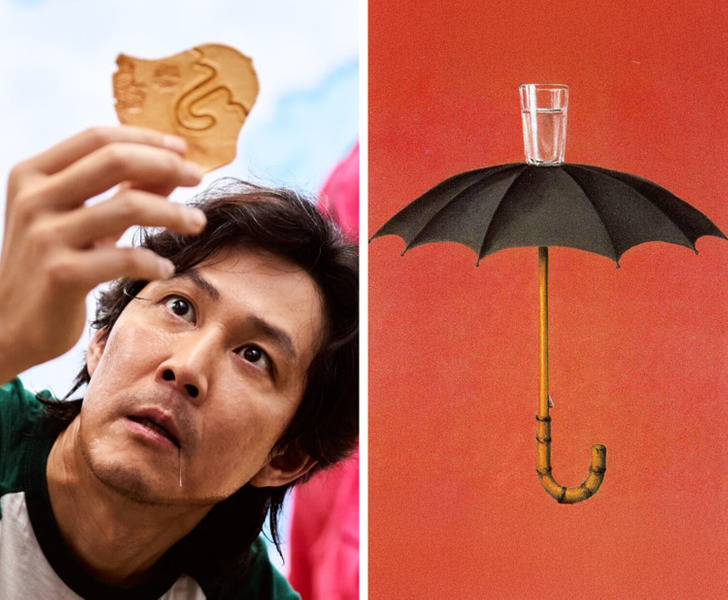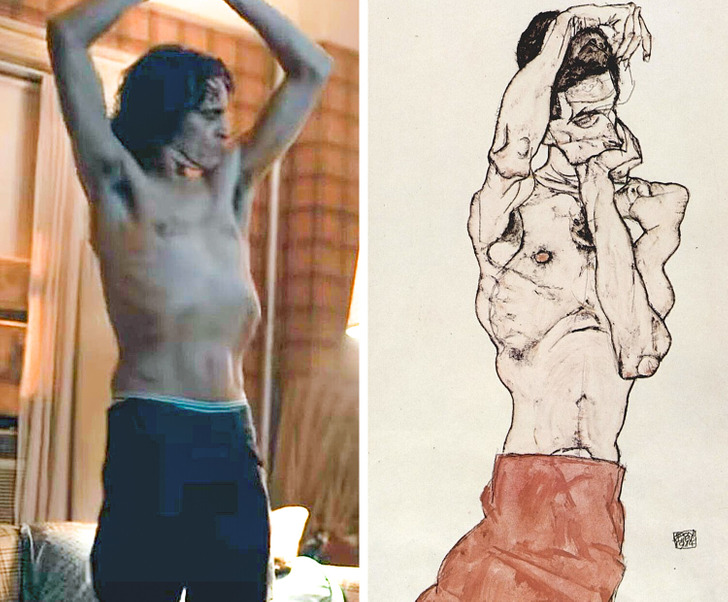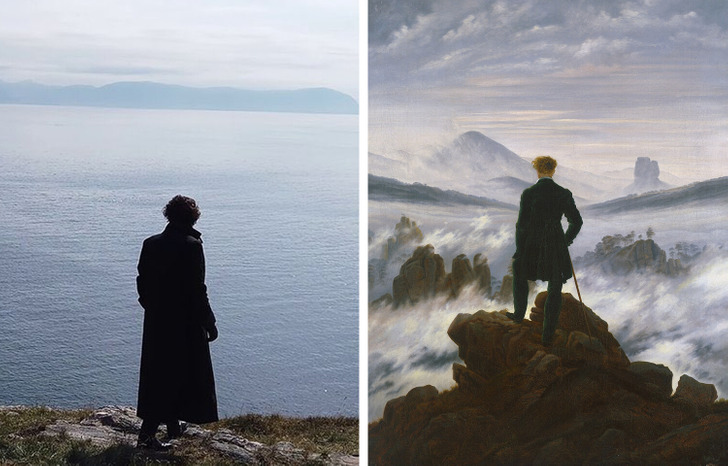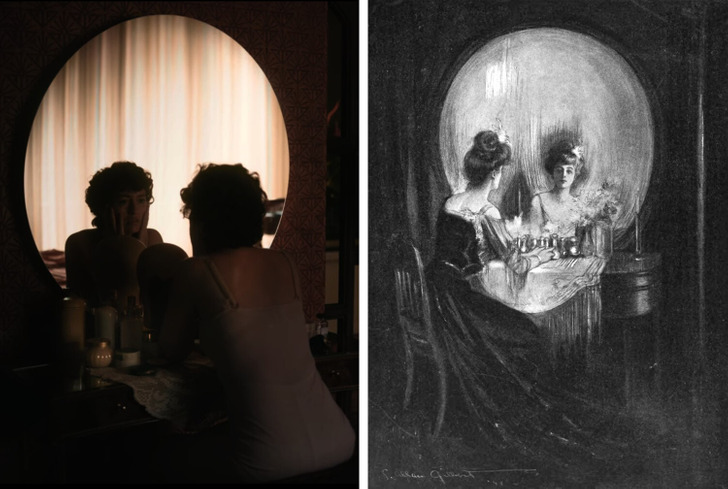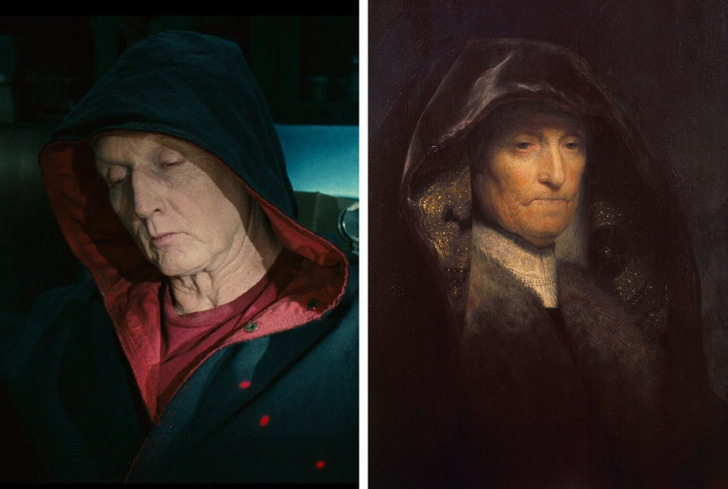who what how ?
7 Movie Scenes That Were Inspired by Iconic Paintings But We Didn’t Notice
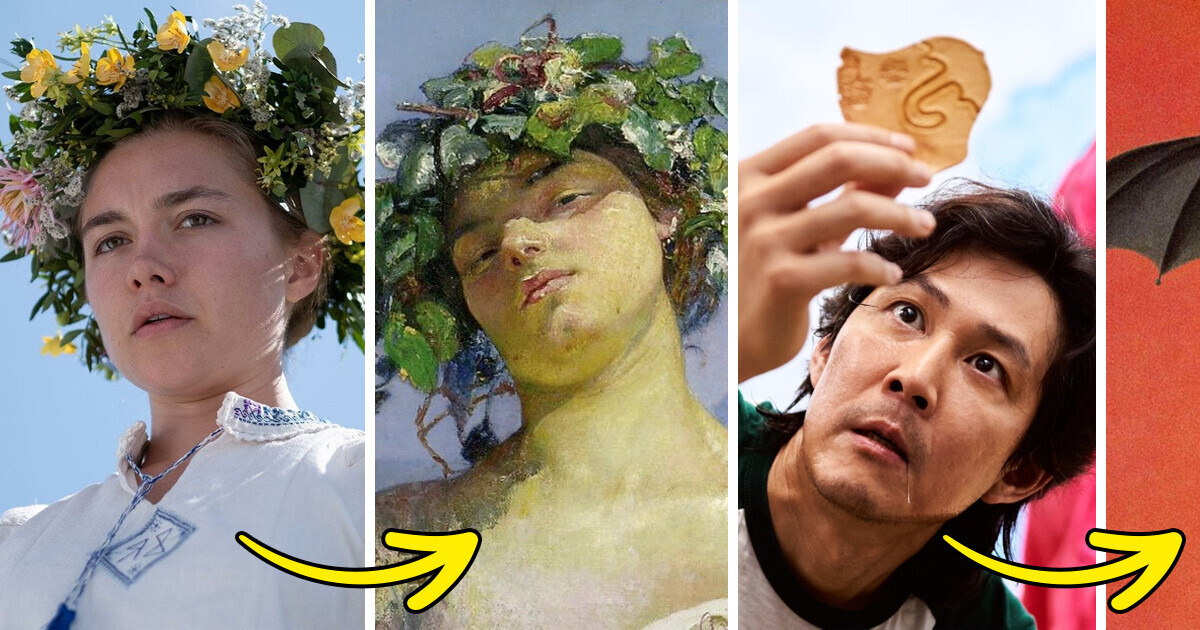
Sometimes a seemingly ordinary movie scene can hide references to masterpieces of art. Film directors masterfully use famous paintings to convey moods, emotions, or even open up the characters. These references become a bridge between the movie and the painting, allowing the viewer to see more than just the story.
Midsommar — Annie Swynnerton, Head of a Bacchante
Midsommar is a folk horror movie known for its pastel palette and sinister rituals. Director Ari Aster managed to unsettle the audience by telling a creepy story which contrasted with the upbeat visual part.
Similar to the women of Harga who participated in the annual Maypole Dance, the Bacchantes were female followers of the Roman God Bacchus who could dance to an ecstatic frenzy wearing wreaths of the God’s sacred plant, ivy, (like in the movie) and were capable of enacting great violence and punishment upon their enemies.
House of the Dragon — Vincenzo Capobianchi, Le Héron Familier
Users of social network X created a thread where they found similarities between the scenes in the House of the Dragon TV show and paintings. So, according to the viewers, the scene in the garden with young Rhaenyra Targaryen and Alicent Hightower refers to the painting by the Italian painter who also depicted 2 girls resting.
Squid Game — René Magritte, Hegel’s Holiday
The director of Squid Game expressed his deep admiration for Belgian artist René Magritte by inserting references to his work into the series. For example, the second episode features various art books and Magritte’s work, including one of his most iconic paintings, The Empire of Light, in which the artist combines 2 opposites: day and night.
And Magritte’s famous umbrella appears in one of the show’s most famous scenes, where the contestants are given biscuits with symbols as a challenge.
Joker — Egon Schiele, Self-Portrait
The movie Joker tells the story of how a failed comedian slowly goes insane, turning into the criminal genius Joker. In some scenes, viewers, including art historians, noted the similarities between Arthur Fleck and a multiple of Egon Schiele’s self-portraits. This is a psychologically complex series of works, showing mainly the angular and haggard body of the artist.
Dune: Part One — Caspar David Friedrich, Wanderer above the Sea of Fog
This iconic painting has been used quite often in movies. There is a Byronic hero reflecting on his path in life. Not surprisingly, this is exactly how the young Paul Atreides, who is to become the messiah in the future, appears to us at the beginning of the movie.
The Queen’s Gambit — Charles Allan Gilbert, All Is Vanity
All Is Vanity is one of many optical illusions created by Charles Allan Gilbert throughout his career. The drawing shows a woman looking at her reflection in the mirror, but altogether it looks like a skull.
And considering that this scene in the show is the last time Alma’s character appears alive, the reference to this painting takes on an ominous meaning.
Saw II — Rembrandt Harmenszoon van Rijn, An Old Woman: The Artist’s Mother
Even in such movies as Saw II, you can find traces of great art. For example, the image of the main antagonist of the series, John Kramer, resembles an image from the Rembrandt’s painting where he depicted his mother in a hooded cloak.
Would you like to know what people from iconic paintings looked like in real life? Check out this article.
Comments
Related Reads
An Artist Turns Cartoon Characters Into Real-Life People, and We Want to See Remakes ASAP
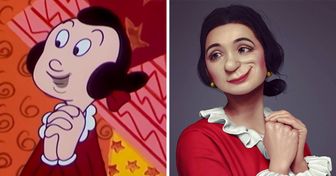
What 18 Movie Characters Would Look Like If They Were Disney Characters

14 Times Employees Handled Toxic Jobs Like Absolute Pros

I Was Shamed for Being a Single Mom — but My Little Girl, 6, Had the Last Word

I Share My Husband With His Ex-Family—I’m Done

I Refused to Babysit My DIL’s Sick Son—I’m Not His Real Grandma

I Refuse to Sleep Under the Same Roof as My Stepson — My Daughter’s Safety Comes First

My MIL Insulted Me in Public—I Taught Her a Lesson

My Dad Demanded to Give My Stepsister the Spotlight on My Wedding—But I Reclaimed It

15+ Raw Stories About Jealousy That Can Leave You Speechless

15 Stories That Show Kindness Is the Quiet Power the World Often Forgets

10 Stories That Prove Kindness Is the Ultimate Cure

